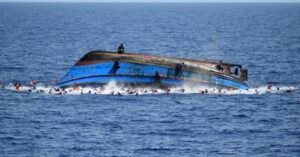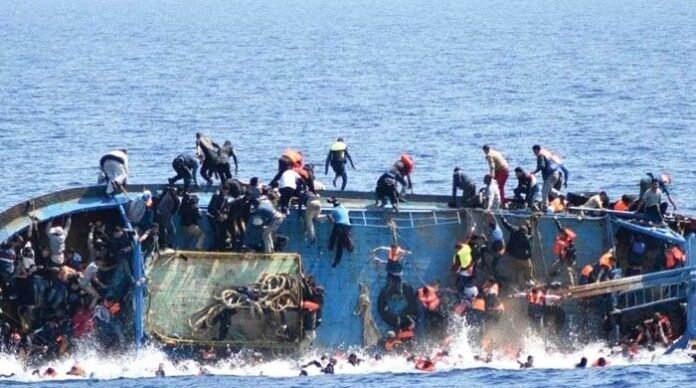At least 42 migrants are missing and presumed dead after a rubber dinghy capsized in the Mediterranean Sea off the coast of Libya, the International Organization for Migration (IOM) said on Wednesday. The latest disaster underscores the continuing humanitarian crisis along one of the world’s deadliest migration routes.
According to Libyan officials, the overcrowded vessel carrying 49 people sank near the Al Buri oilfield, located northwest of the Libyan coast. Seven survivors, all in critical condition, were rescued after drifting for nearly six days at sea before being found by local authorities.

The IOM said the victims were believed to be from Sudan, Nigeria, Cameroon, and Somalia — countries deeply affected by conflict, political instability, and economic hardship.
A Deadly Pattern in the Central Mediterranean
The Central Mediterranean route — stretching from North Africa to southern Europe — remains the most perilous sea crossing for migrants and refugees. The IOM reports that more than 1,000 people have already drowned along this route in 2024, and 2,452 deaths have been recorded across the entire Mediterranean this year, making it one of the deadliest on record.
“This tragic event, coming just weeks after other deadly incidents off Surman and Lampedusa, underscores the persistent dangers faced by migrants and refugees along the Central Mediterranean Route,” the IOM said in a statement.
Recent months have seen a string of similar tragedies. In mid-October, Libyan authorities recovered 61 bodies from a wreck west of Tripoli, while in September, at least 50 migrants — mostly Sudanese refugees — died when their vessel caught fire off the Libyan coast.
Libya’s Troubled Role in the Migration Crisis
Since the fall of longtime ruler Muammar Gaddafi in 2011, Libya has become a primary transit hub for thousands of people attempting to reach Europe in search of safety and better economic prospects. Smugglers often exploit vulnerable migrants, charging exorbitant fees for passage on unsafe and overcrowded boats.
Despite repeated international calls for reform, Libya’s detention and migration systems remain in crisis. Human rights organizations have long documented widespread abuse, extortion, and torture in migrant detention centers operated by both official and militia-run groups.
At a United Nations review session in Geneva on Tuesday, several countries — including Britain, Spain, Norway, and Sierra Leone — urged Libya to close its migrant detention facilities, citing evidence of torture, sexual abuse, and extrajudicial killings.
Calls for Greater Action
Aid agencies warn that without stronger international cooperation, tragedies like this will continue. The U.N. Refugee Agency (UNHCR) has repeatedly called for the creation of safe and legal migration pathways to Europe and for improved search-and-rescue operations in the central Mediterranean.
However, political divisions within the European Union and a growing focus on deterrence policies — including deals with North African governments to prevent departures — have hindered progress.
“The loss of these lives should not be accepted as inevitable,” said Flavio Di Giacomo, an IOM spokesperson. “Every life lost at sea is a reminder of the urgent need for safer, legal alternatives and greater responsibility-sharing among nations.”
A Crisis With No End in Sight
The survivors of this week’s shipwreck have been transferred to a detention facility in western Libya for medical treatment and questioning. Humanitarian groups fear that, without systemic change, more lives will be lost before the year’s end.
So far in 2024, the IOM estimates that over 180,000 migrants have attempted the Mediterranean crossing — a figure that continues to rise despite the extreme risks.
As search and rescue efforts continue, the tragedy off Libya’s coast serves as yet another grim reminder that the world’s migration crisis remains unresolved — and that the Mediterranean, once a cradle of civilization, has become a graveyard for those seeking hope.
Source:Africa Publicity








